That narrow passageway you hurry through everyday might not be living up to it’s full potential. Hallways often become the forgotten spaces in our homes—purely functional rather than beautiful.
But what if your hallway could be both a practical transition zone and a stunning design feature that makes guests stop and stare?
In this comprehensive guide, we’ll explore 20 innovative ideas to transform your hallway walls from boring to breathtaking.
Whether you’ve got a narrow corridor that needs visually expanding or a spacious hallway begging for personality, these wall decor strategies combine style and function to create spaces that are as useful as they are beautiful.
Understanding Your Hallway’s Potential
Before diving into specific decor ideas, take a moment to really understand your hallway’s unique characteristics. According to interior designer Emma Thompson, “The most successful hallway transformations begin with a honest assessment of the space’s dimensions, lighting conditions, and traffic patterns.”
Start by measuring your hallway’s width, height, and length. Narrow hallways (under 3 feet wide) require different treatment than wider passages. Similarly, hallways with natural light sources offer different opportunities than those without windows.
Consider how people move through the space. High-traffic areas need durable, practical solutions that won’t obstruct movement, while less-traveled hallways can accommodate more delicate or protruding elements.
A 2023 survey by Home Design Institute found that hallways are among the most neglected spaces in homes, with over 67% of homeowners reporting they’ve put little thought into hallway decor. Yet the same survey revealed that thoughtfully designed hallways increased percieved home value by up to 4.3%.
Now, let’s explore transformative ideas that’ll make your hallway walls truly shine.
1. Mirrors: Creating Space and Light
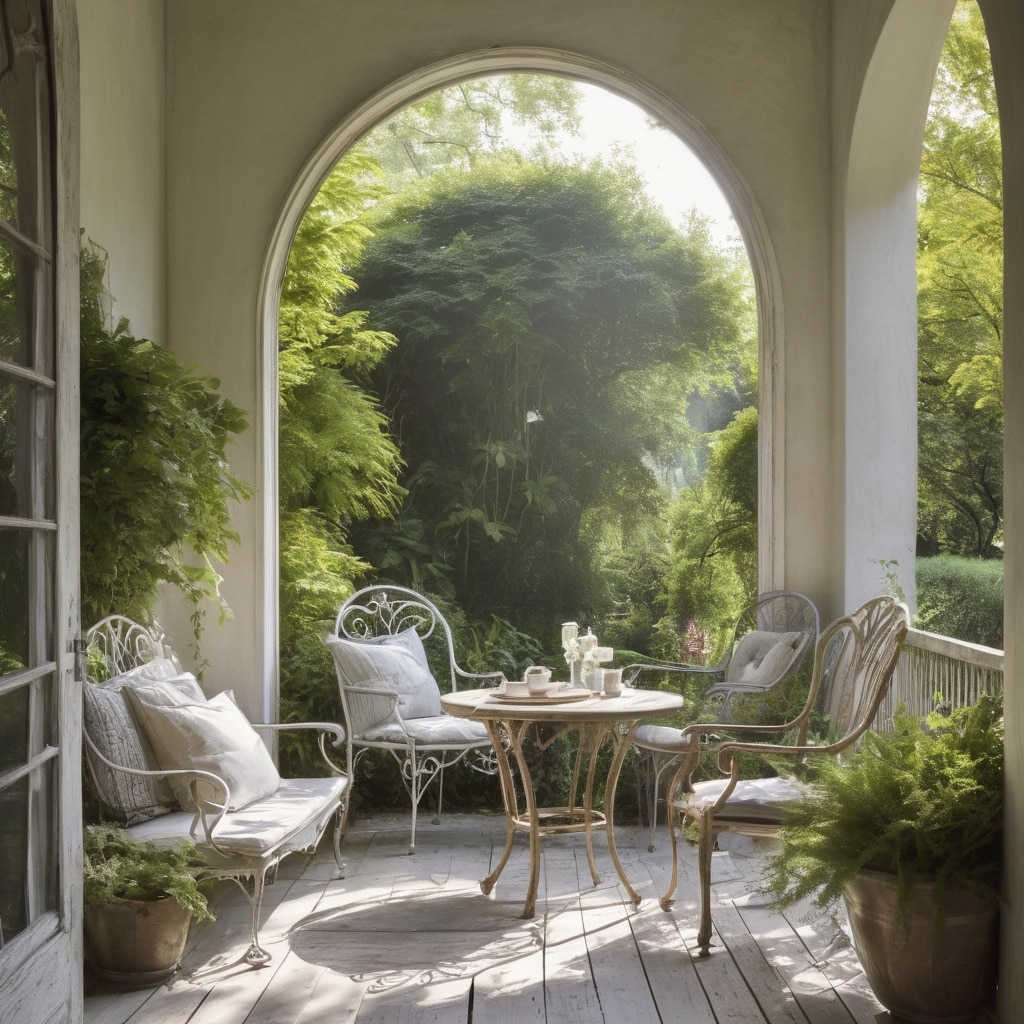
Mirrors are the hallway decorator’s secret weapon, especially in narrow spaces that feel cramped or dark.
A strategically placed mirror reflects both light and space, creating the illusion of a larger area. Interior designer Mark Roberts suggests, “Position mirrors opposite natural light sources whenever possible to maximize brightness throughout the day.”
For narrow hallways, consider these mirror placement strategies:
- Full-length mirrors on one wall create dramatic depth
- Clusters of smaller mirrors add visual interest while still expanding the space
- Mirrors with built-in shelving combine reflection with storage
- Antiqued or tinted mirrors add character while still providing reflection
The frame you choose significantly impacts the overall effect. Modern spaces benefit from frameless or minimally framed mirrors, while ornate vintage frames can become artistic statements in traditional homes.
According to lighting experts, a well-placed mirror can increase a hallway’s perceived brightness by up to 30% without adding additional light fixtures—a smart energy-saving strategy with immediate visual impact.
2. Gallery Walls That Tell Your Story
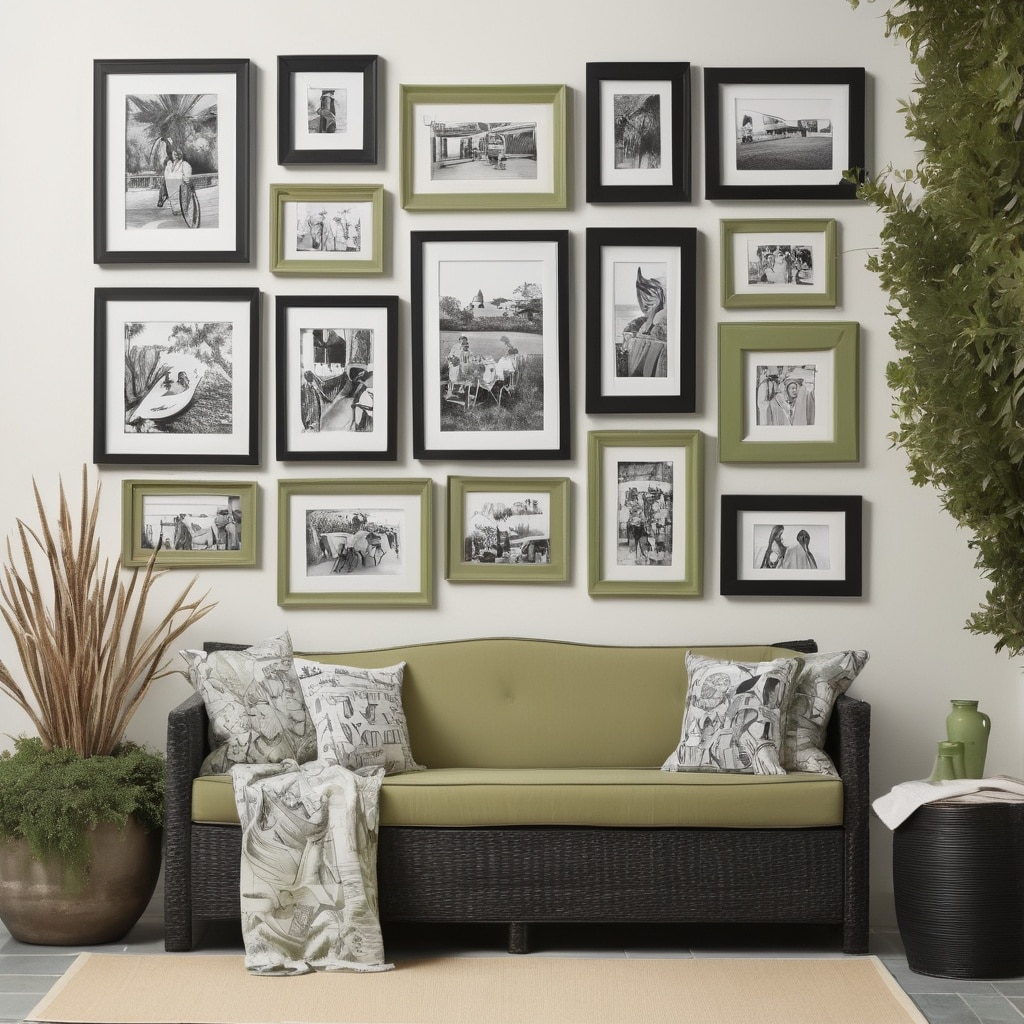
Gallery walls transform empty hallway spaces into personalized art exhibitions that evolve with your life and interests.
Unlike the perfectly matched galleries of yesteryear, today’s approach embraces eclectic combinations. Mix photographs with prints, paintings, and even three-dimensional objects for maximum visual impact.
When planning your gallery wall, consider these arrangement techniques:
- Grid layouts create order and symmetry, perfect for formal spaces
- Salon-style arrangements (varied sizes with minimal space between frames) create dynamic energy
- Linear installations work well in very narrow hallways where vertical space exceeds horizontal width
- Growing galleries start with a few key pieces and expand over time as you acquire new art
Professional gallery curator Sarah Chen recommends, “Begin with a focal piece that holds special meaning, then build your collection around it. The most compelling gallery walls combine personal significance with visual harmony.”
For installation, don’t eyeball it—use painter’s tape to map out the arrangement on your wall before hammering a single nail. Digital planning tools like Adobe Express and Canva now offer free gallery wall templates that let you visualize your arrangement before committing.
3. Functional Shelving Solutions
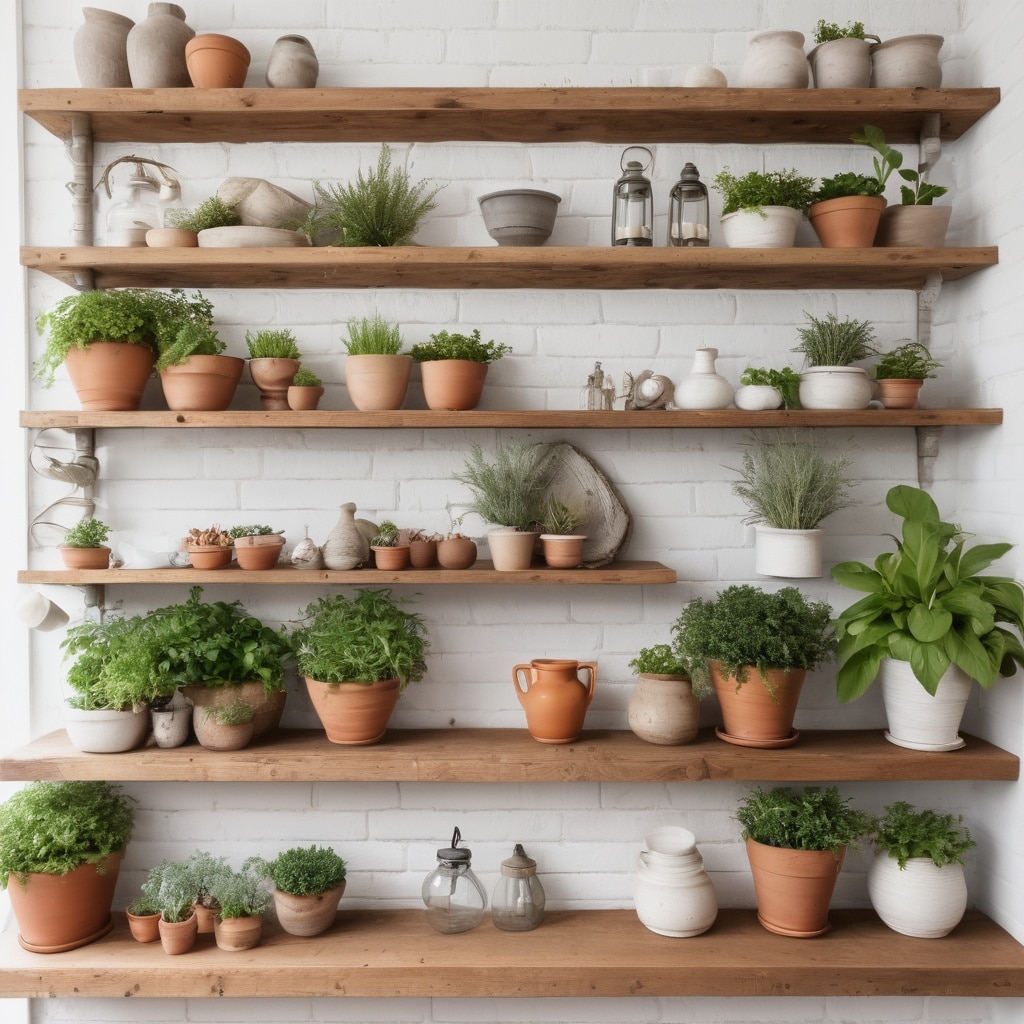
When space is at a premium, wall-mounted shelving delivers both style and practicality to hallway walls.
Modern floating shelves create clean lines without visual bulk, but the styling of those shelves determines whether they enhance or detract from your space. Interior stylist James Peterson notes, “The mistake most people make is overcrowding hallway shelves. In narrow passages, negative space is as important as displayed objects.”
Consider these hallway shelving approaches:
- Staggered floating shelves create visual rhythm while maximizing display space
- Picture ledges accommodate both framed art and small objects that can be easily rotated
- Corner shelving solutions utilize often-wasted space at hallway transitions
- Shallow built-ins (recessed between wall studs) add display space without protruding into the walkway
When installing hallway shelving, weight capacity matters. Standard floating shelves typically support 15-40 pounds depending on mounting hardware and wall construction. For heavier items, ensure you’re anchoring directly to wall studs rather than drywall alone.
A clever styling tip: arrange objects in odd-numbered groupings (3, 5, 7) rather than pairs, which creates more dynamic visual interest according to the principles of design psychology.
4. Bold Color Statements
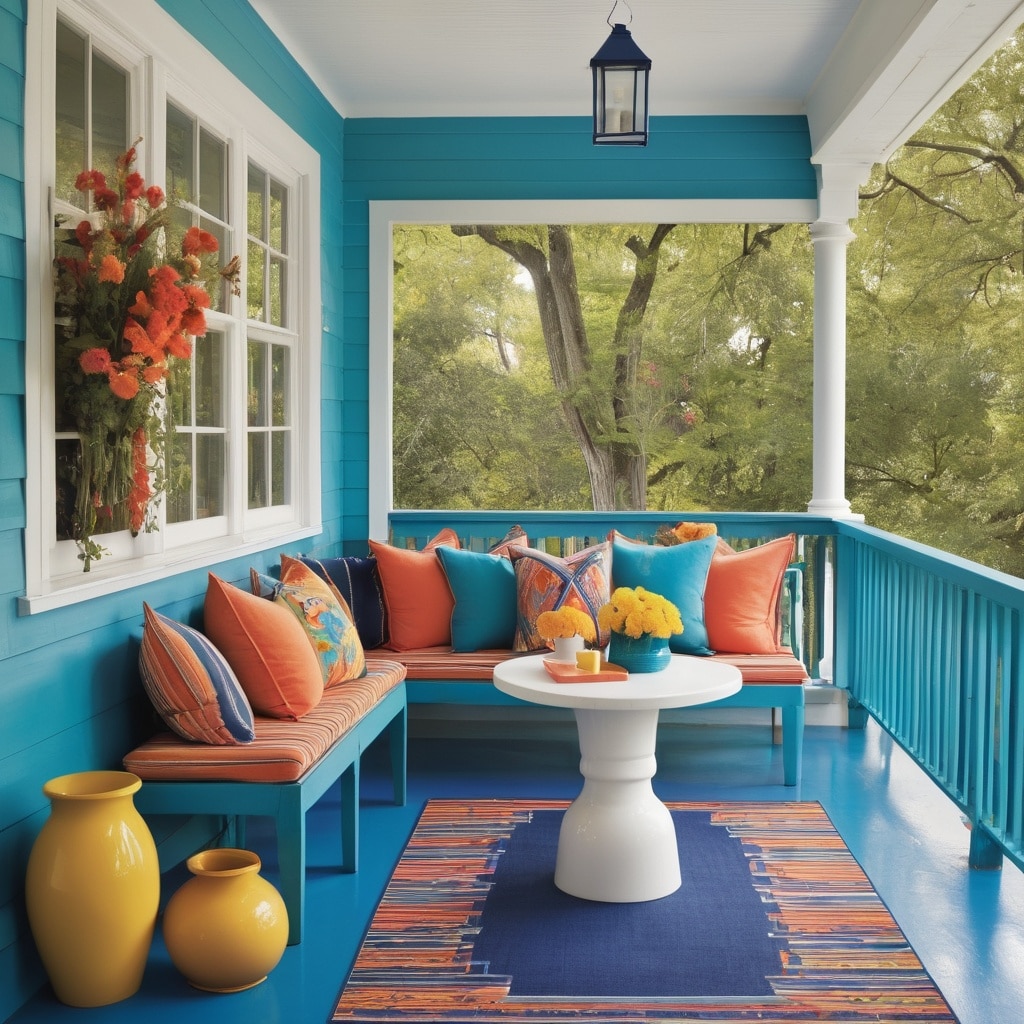
Nothing transforms a space faster or more dramatically than color, and hallways provide perfect opportunities for color experimentation.
“Hallways can handle stronger color statements than many other spaces because we pass through them rather than linger,” explains color psychologist Dr. Rebecca Martinez. “This transitory nature makes them ideal for colors that might feel overwhelming in living areas.”
Consider these bold approaches to hallway color:
- Dark, saturated colors (navy, charcoal, forest green) create sophistication and drama
- Color blocking divides walls horizontally to visually expand narrow spaces
- Ombré techniques transition between related hues for subtle movement
- Single accent walls pack visual punch without overwhelming the space
Before committing to a hallway color, test large swatches (at least 2′ square) and observe them at different times of day. Hallway lighting conditions change dramatically from morning to evening, and colors respond accordingly.
According to Benjamin Moore’s 2024 color trend report, hallways are increasingly becoming “color test labs” where homeowners experiment with bolder hues before committing to them in larger spaces. Their data shows that hallway paint colors are now 37% more saturated than living room colors in the average American home.
5. Textural Elements: Shiplap and Beyond
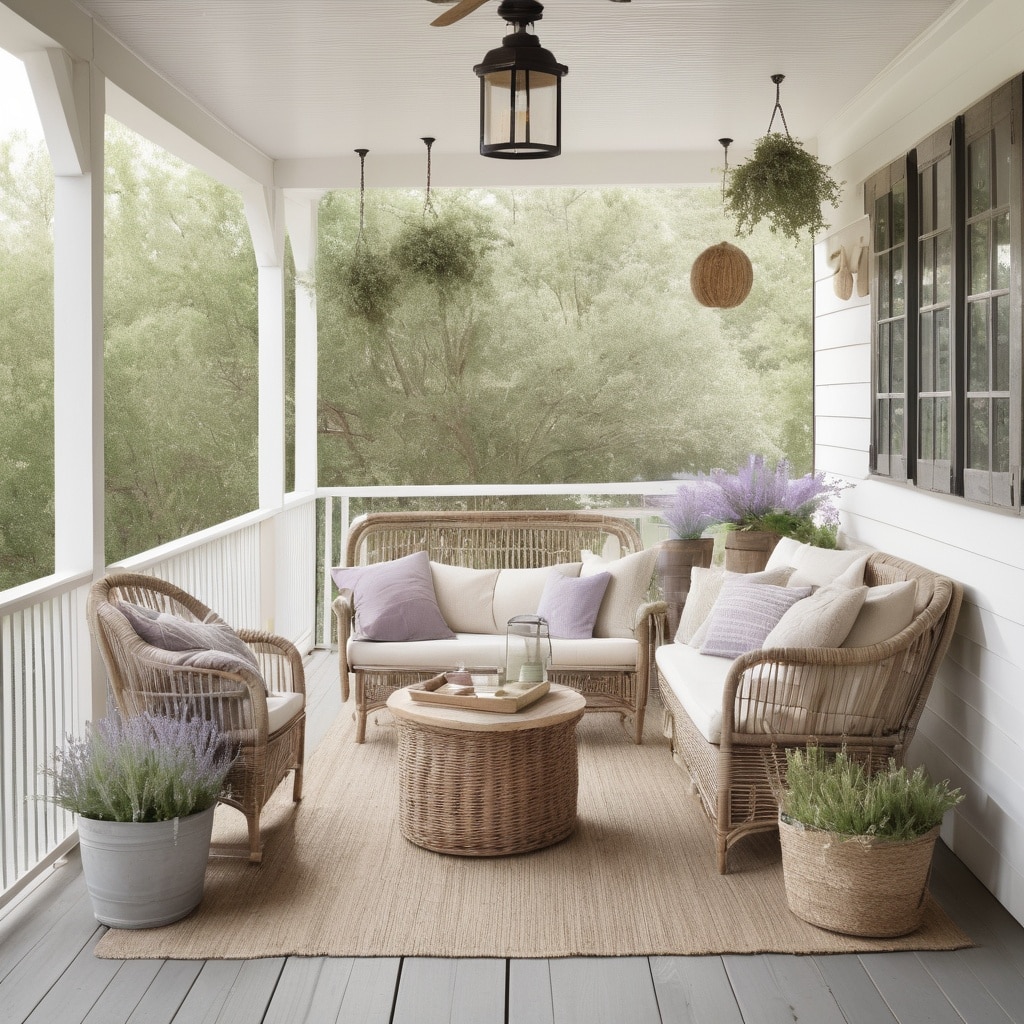
Texture adds vital dimension to hallway walls, creating visual interest even in minimalist color schemes.
Shiplap—horizontal wooden boards with slight gaps between them—has remained popular because it adds architectural interest to otherwise plain walls. But it’s just one of many textural opportunities for hallway walls.
Consider these textural treatments:
- Beadboard (wainscoting) for traditional charm, typically installed on the lower third of walls
- Textured wallpaper including grasscloth, linen, and embossed patterns
- Board and batten for architectural detail that adds dimension without overwhelming
- Applied molding patterns that create geometric interest on flat surfaces
DIY-friendly options like peel-and-stick wood planks have made textural walls more accessible for renters and those on tight budgets. Companies like Stikwood offer authentic wood products that install without permanent damage.
Maintenance matters in high-traffic areas, so consider durability when selecting textural elements. Sealed wood products and washable textured wallpapers offer the best combination of visual interest and practical performance.
6. Wallpaper as a Design Statement
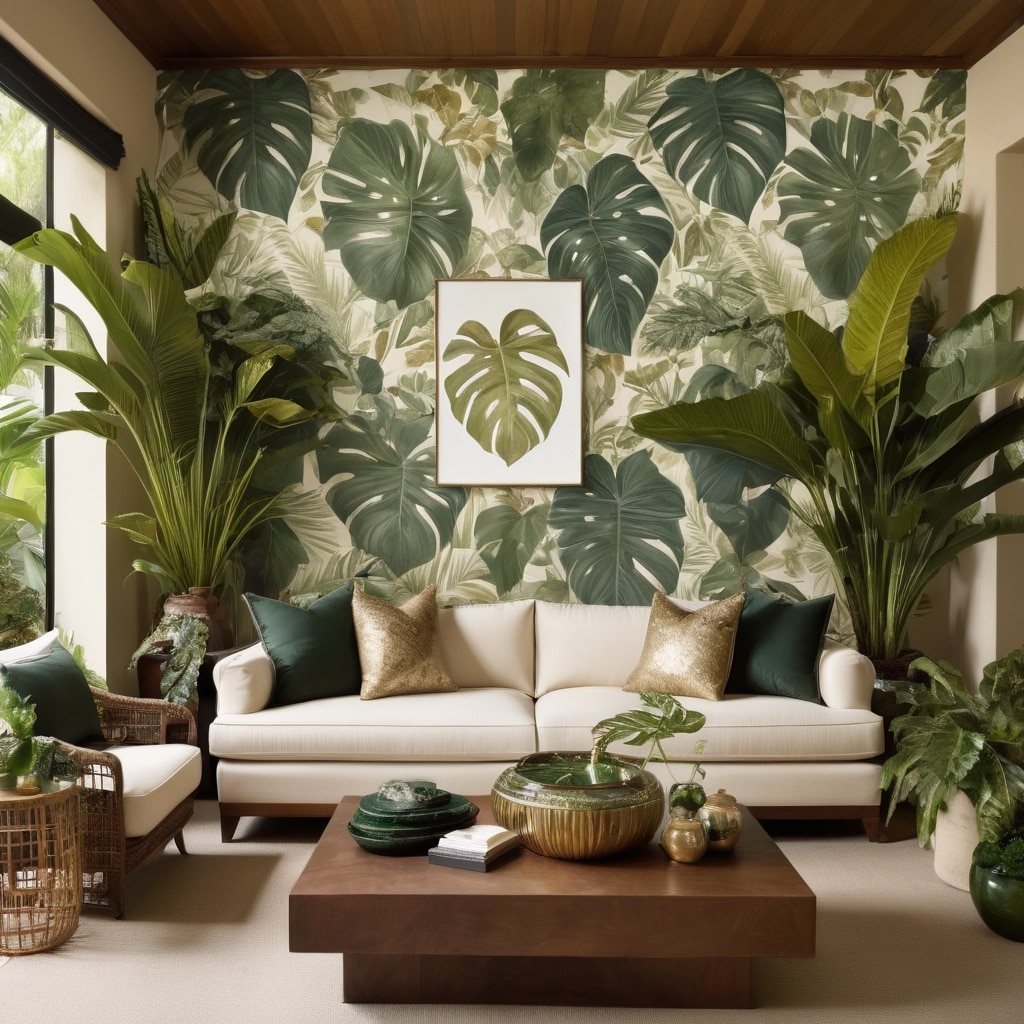
Wallpaper has undergone a remarkable renaissance, with today’s options ranging from subtle textures to bold artistic statements—perfect for hallway transformations.
“Hallways are ideal for pattern experimentation,” says wallpaper designer Kelly Harrison. “The limited wall space means you can use dramatic patterns that might overwhelm larger rooms, creating memorable moments of transition.”
When selecting hallway wallpaper, consider:
- Scale appropriateness—smaller patterns for narrow spaces, larger patterns for wider hallways
- Directional patterns—horizontal stripes visually widen spaces while vertical patterns heighten
- Light reflectivity—metallic and pearlescent finishes bounce light in dark corridors
- Practical finishes—scrubbable and washable options for high-traffic areas
For renters or the commitment-phobic, removable wallpaper options from companies like Chasing Paper and Tempaper have revolutionized temporary wall treatments. These peel-and-stick products install and remove without damage, making bold pattern choices less risky.
According to wallpaper retailer Graham & Brown, hallways now account for nearly 23% of wallpaper purchases, up from just 8% a decade ago, reflecting growing consumer confidence in statement walls for transitional spaces.
7. Lighting as Decoration and Function
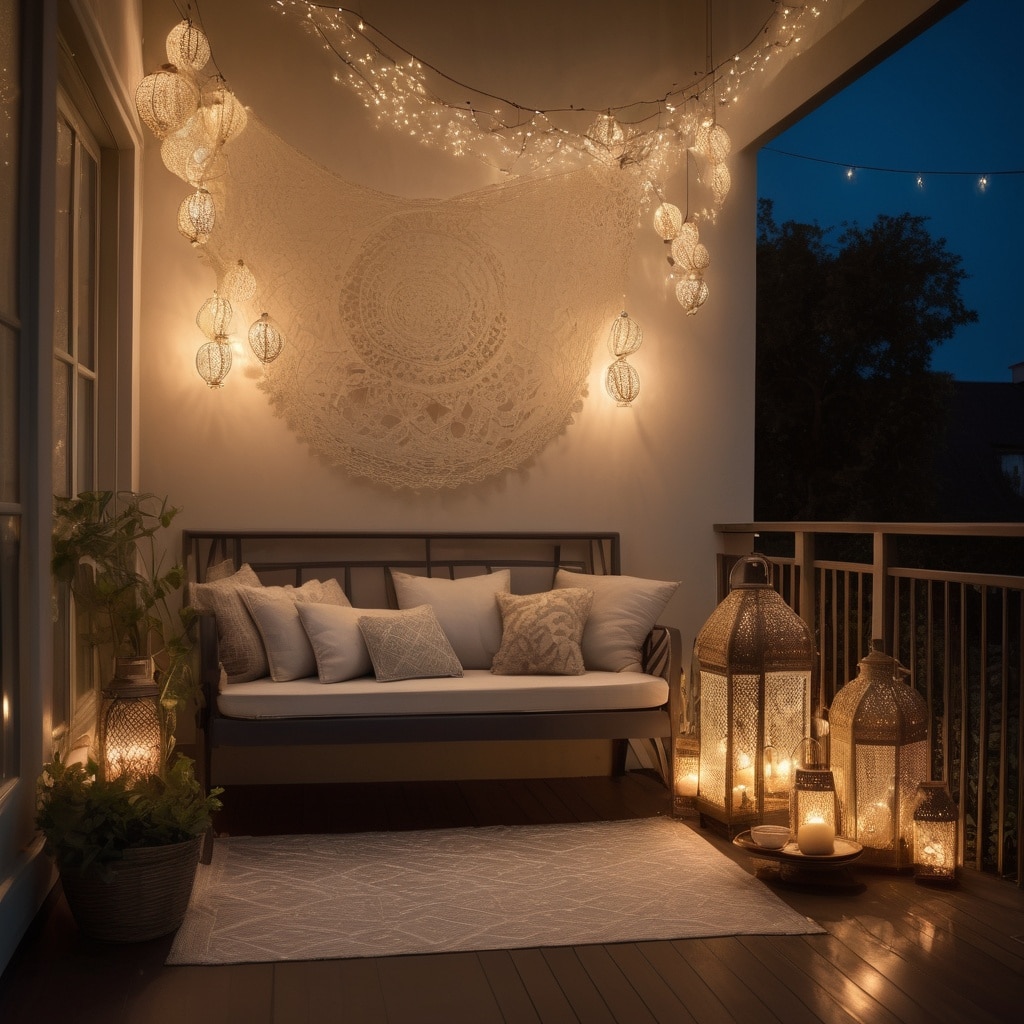
Well-designed hallway lighting does double duty—illuminating the space while serving as decorative elements in their own right.
“Hallway lighting requires thoughtful layering,” explains lighting designer Thomas Chen. “You need functional illumination for safety, but also aesthetic lighting that enhances the mood and highlights your decorative elements.”
Consider these lighting approaches for hallway walls:
- Sconces at eye level create pools of light that draw the eye forward
- Picture lights highlight artwork while providing ambient illumination
- Recessed directional spots wash walls with light, highlighting texture
- LED strip lighting behind floating shelves creates dramatic floating effects
For optimal placement, wall sconces should be installed approximately 5’6″ from the floor and spaced 6-8 feet apart in most residential hallways. This creates comfortable light distribution without glare at eye level.
Smart lighting solutions have made hallway illumination more convenient and energy-efficient. Motion-activated systems from companies like Lutron and Philips Hue can be programmed to provide bright light during active periods and subtle guidance lighting overnight, reducing energy consumption by up to 35% according to Energy Star data.
8. Statement Art Pieces
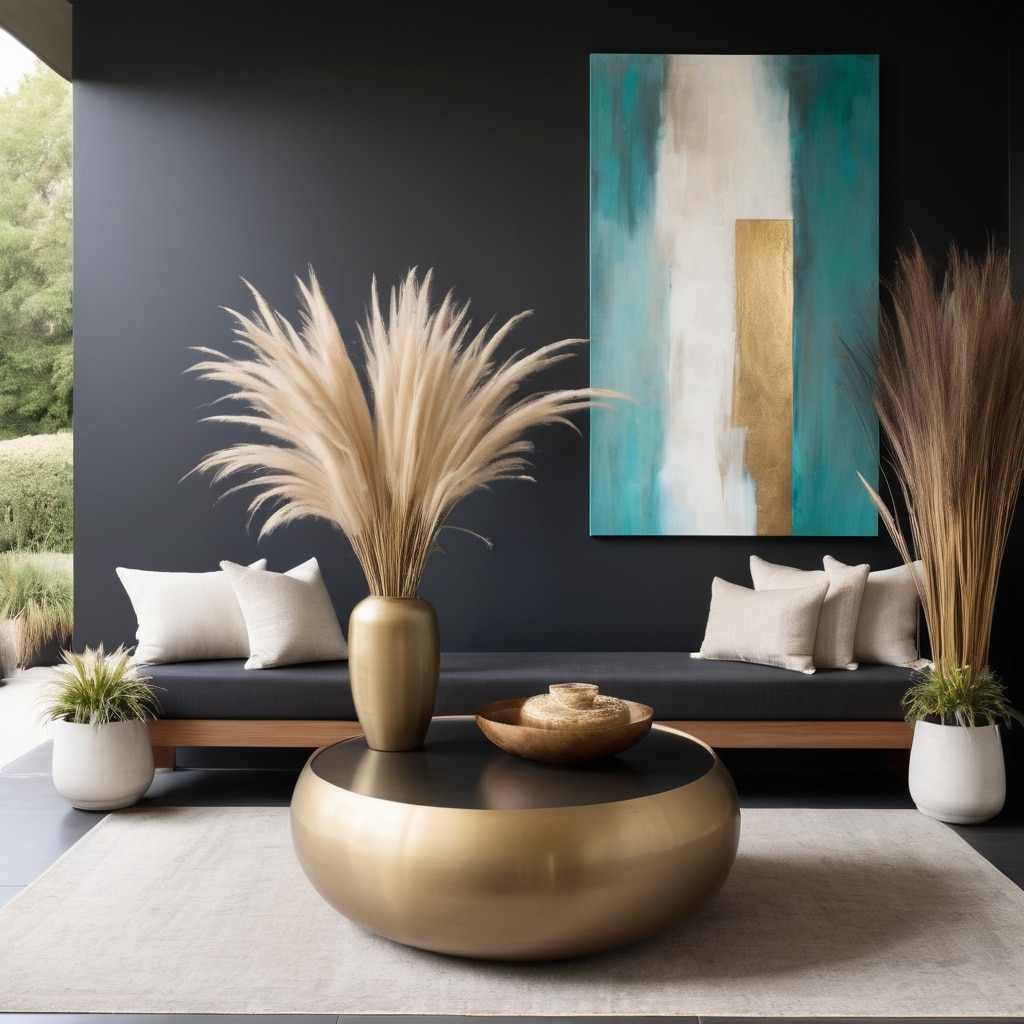
Nothing transforms a hallway faster than a single piece of impactful artwork that commands attention and sets the tone for your entire home.
Unlike gallery walls, statement pieces rely on scale and singularity for their effect. Art consultant Rachel Kim advises, “For maximum impact, a statement piece should occupy approximately 60-75% of the available wall space. Any smaller and it loses presence; any larger and it can feel cramped.”
When selecting statement art for hallways, consider:
- Scale appropriateness—larger pieces for longer walls, vertical orientation for narrow spaces
- Subject matter visibility—complex details may be lost in spaces we move through quickly
- Lighting requirements—dedicated art lighting enhances impact significantly
- Framing options—frame width should be proportional to both artwork and wall dimensions
Investment doesn’t necessarily equal impact. Emerging artist platforms like Saatchi Art and Society6 offer affordable large-scale pieces, while custom framing of oversized vintage posters or maps can create dramatic statements on modest budgets.
For high-impact, low-cost alternatives, consider oversized engineer prints of your own photography. At approximately $25 for black and white prints up to 36″×48″, these matte-finish reproductions create dramatic scale at minimal cost.
9. Personal Touch: Family Photo Displays
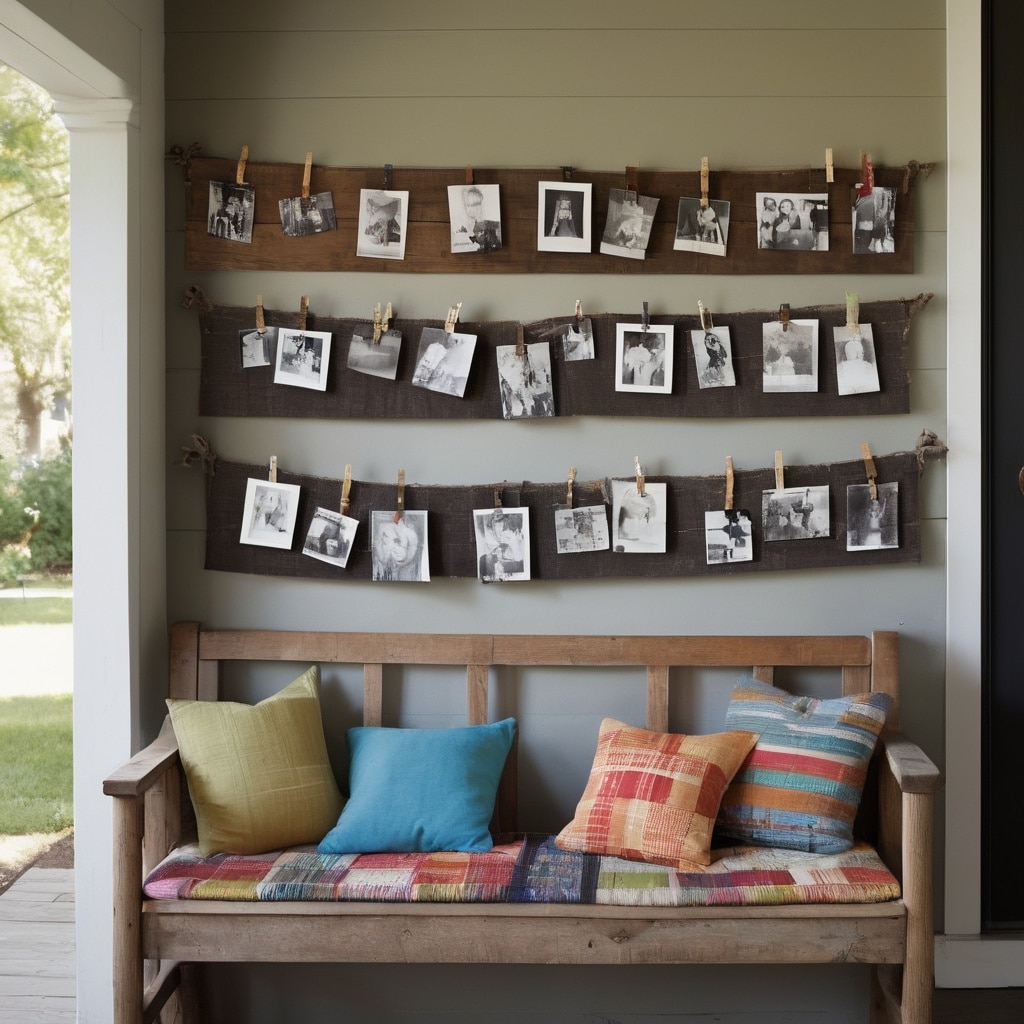
Family photos bring warmth and personality to hallway walls, but avoiding the “random photo collection” look requires thoughtful curation and presentation.
Professional photographer Elena Rodríguez suggests, “For cohesive family galleries, consider unifying elements—either matching frames, consistent photo editing styles, or thematic content. This creates collection impact rather than visual chaos.”
Consider these approaches to family photo displays:
- Chronological installations that follow family history along the hallway length
- Thematic groupings organized by vacations, celebrations, or seasons
- Consistent processing (all black and white or all color with similar treatment)
- Matching frames with varied mat sizes to accommodate different photo dimensions
Digital alternatives have expanded display possibilities. Digital frame systems like Aura and Nixplay allow rotating collections without permanent installation, while custom-printed photo books displayed on shelves offer curated viewing without wall commitment.
For maximum impact with minimal effort, photo printing services like Mixtiles and Framebridge offer coordinated frame collections specifically designed for gallery installations, with templates and hanging guides that simplify the process.
10. Plant Life in Limited Spaces
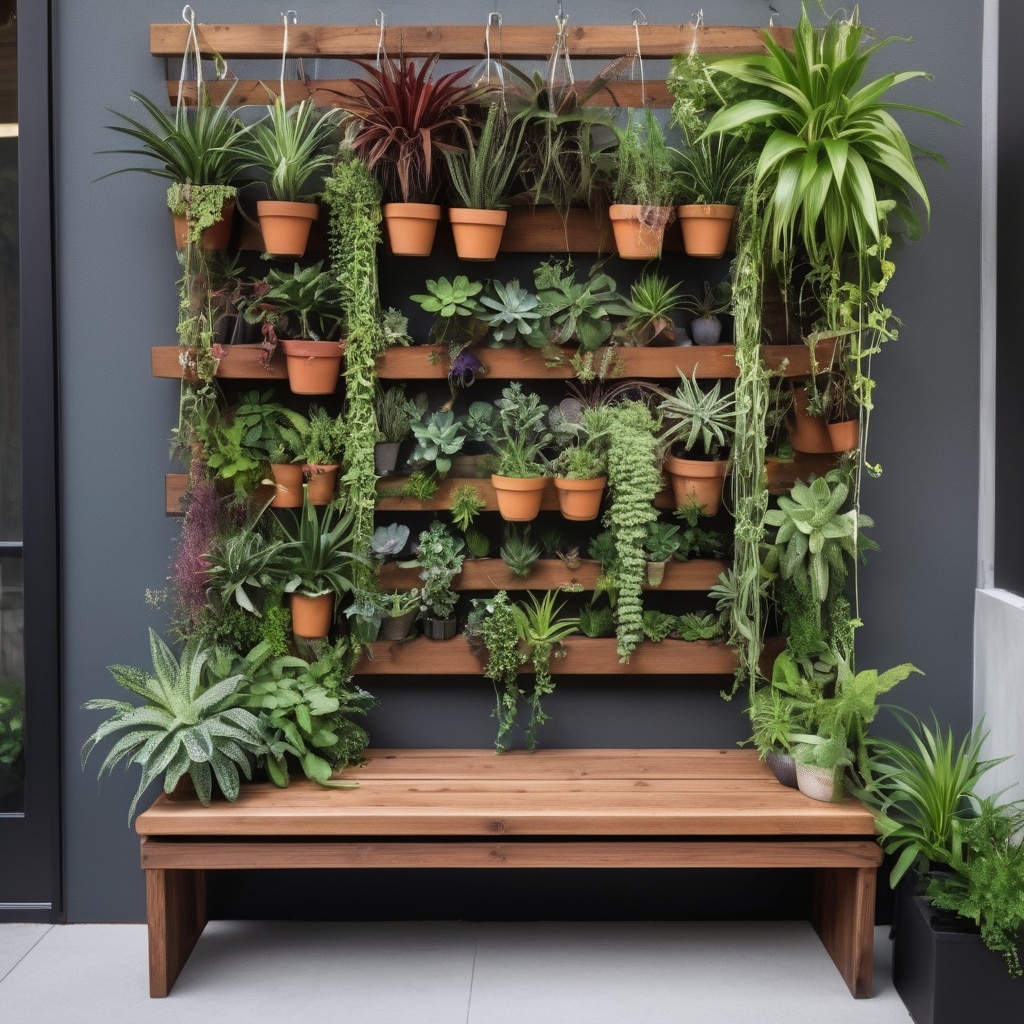
Plants bring vitality to hallway walls through vertical gardens, hanging installations, and shelf displays—even in spaces without natural light.
“The key to successful hallway plantings is honest assessment of light conditions,” explains plant stylist Jordan Greene. “Many beautiful options thrive in low light, but proper selection is essential for long-term success.”
For hallway plant displays, consider:
- Wall-mounted planters that add greenery without floor footprint
- Trailing varieties that create vertical impact from shelf placements
- Preserved plants (like moss walls) that require no maintenance
- Grow light solutions for completely windowless hallways
Low-light tolerant plants ideal for hallways include pothos, ZZ plants, snake plants, and certain ferns. For extremely low light conditions, realistic artificial options have improved dramatically, with companies like Nearly Natural and Pottery Barn offering convincingly lifelike specimens.
Mounting considerations matter for living walls. Most systems require waterproofing protection and weigh considerably more when watered. Professionally installed systems like LiveWall provide both structural support and irrigation systems for worry-free maintenance.
11. Minimalist Approaches for Clean Aesthetics
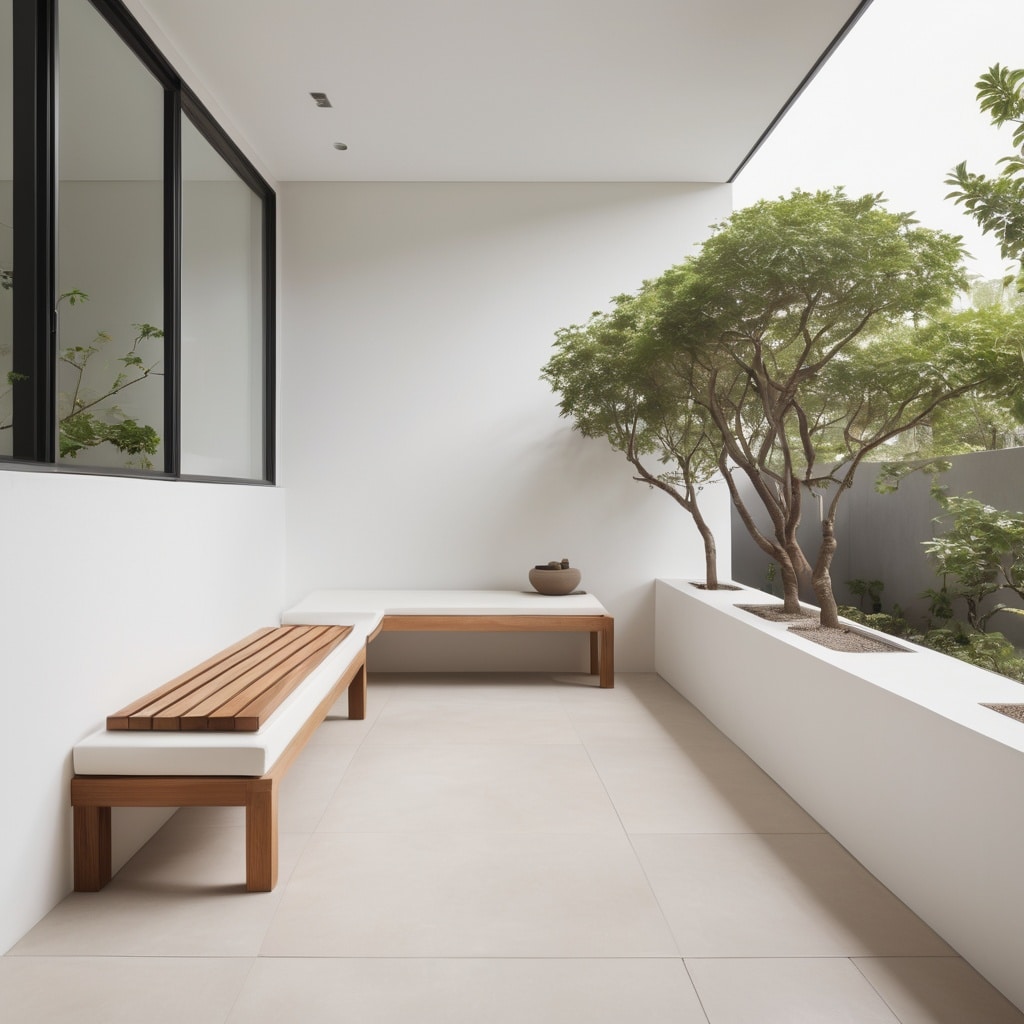
Minimalist hallway design isn’t about absence—it’s about intentional curation that respects negative space as much as objects.
“The challenge of minimalist hallways lies in the editing,” notes interior designer Naomi Lee. “Every element must earn its place through both beauty and function. Nothing extraneous survives the cut.”
For successful minimalist hallway walls, consider:
- Limited color palettes with subtle tonal variations rather than high contrast
- Hidden storage solutions that maintain clean lines while providing function
- Carefully chosen focal pieces that stand alone without competition
- Architectural lighting that enhances wall planes rather than decorative fixtures
Material selection becomes particularly important in minimalist spaces. Natural materials with subtle variations (like unfinished wood, natural stone, or hand-applied plaster) provide visual interest without pattern or color complexity.
According to a 2023 architectural psychology study from Columbia University, minimalist transitional spaces like hallways were rated as significantly more calming than decorated versions, suggesting that simplified corridors may provide valuable mental “rest” between more stimulating rooms.
12. Interactive Elements: Chalkboard and Beyond
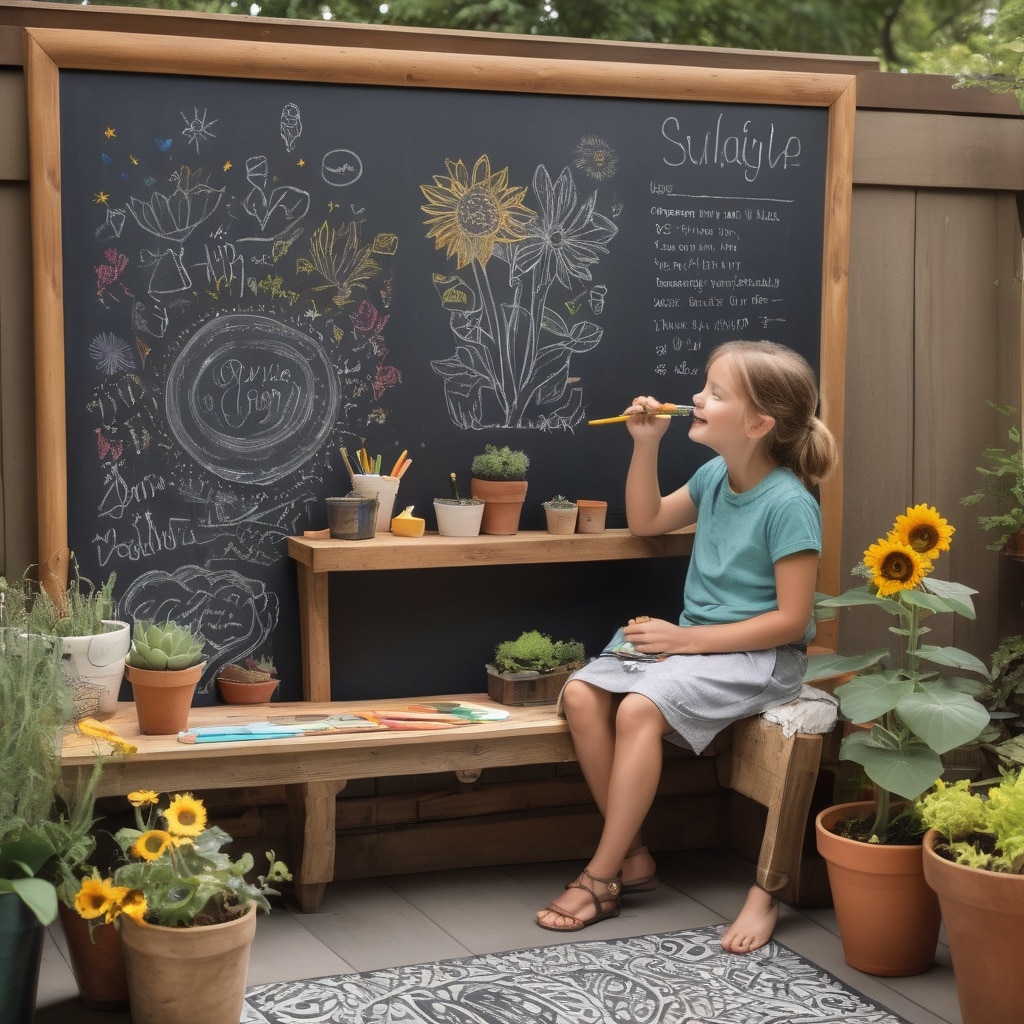
Interactive wall surfaces transform hallways from passive passages into functional communication hubs and creative outlets.
“Interactive walls reinvent how families use transitional spaces,” explains organizational expert Michael Torres. “They convert previously unused wall real estate into practical command centers that support daily life.”
Consider these interactive wall options:
- Chalkboard paint sections for messages and spontaneous creativity
- Magnetic paint underlayers combined with color overcoats for invisible function
- Cork strips or panels for rotating displays of schedules and artwork
- Fabric-covered bulletin boards that combine function with textile interest
For maximum versatility, consider combination surfaces. For example, magnetic chalkboard paint creates surfaces that support both writing and magnetic attachments, while clear dry-erase overlays can transform any painted surface into a writable area.
Maintenance matters for interactive surfaces. Chalkboard walls require regular cleaning and occasional “reseasonong” with chalk dust, while magnetic surfaces need periodic checks to ensure continued attraction strength.
13. Metallic Accents for Visual Interest
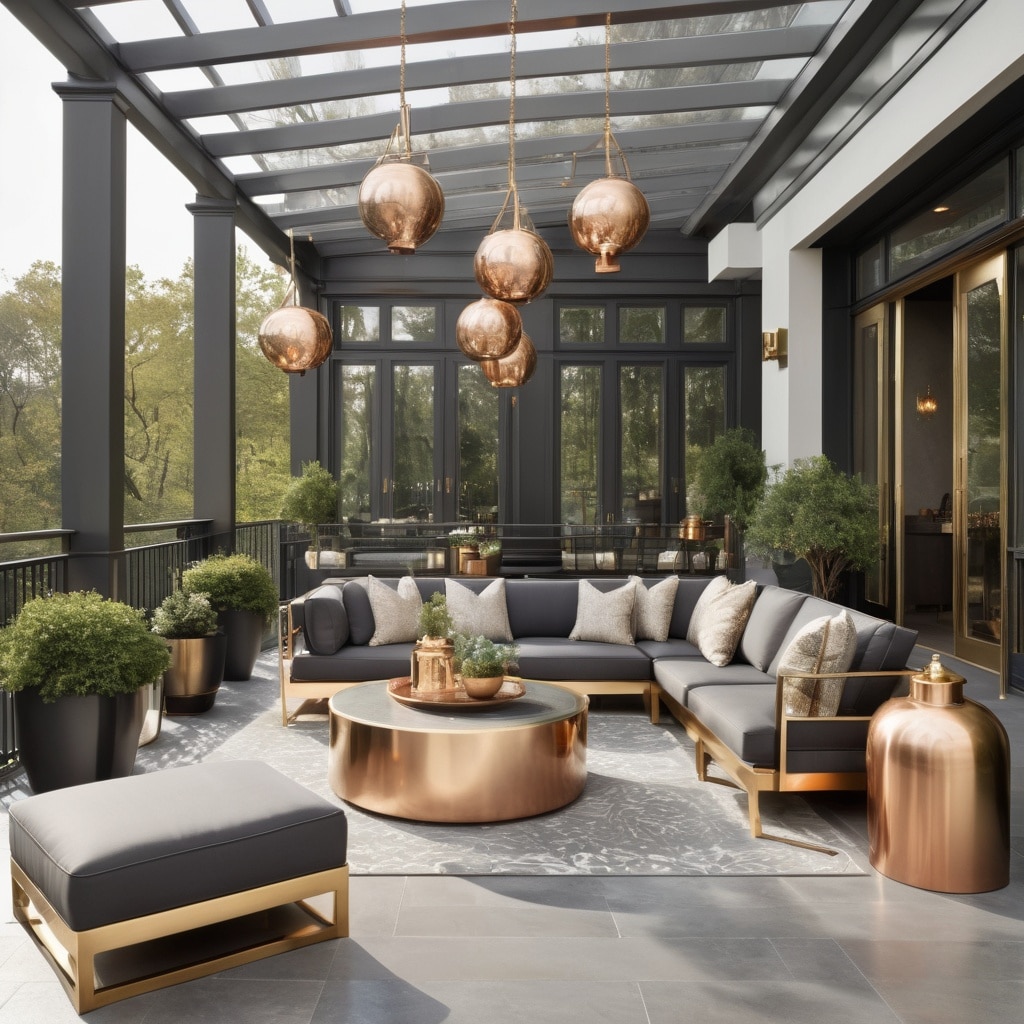
Metallic elements add sophisticated reflectivity and texutral contrast to hallway walls, catching and playing with available light.
“Metallics function almost as neutral elements in transitional spaces,” explains materials specialist David Wang. “They coordinate with virtually any color scheme while adding dimension that flat materials can’t achieve.”
Consider these metallic approaches for hallway walls:
- Mixed metal gallery frames that create cohesion through material rather than color
- Metal wall sculptures that create shadow play with hallway lighting
- Antiqued mirror tiles that combine metallic and reflective properties
- Metallic wallpaper that creates subtle light movement throughout the day
When mixing metal finishes—a contemporary approach that’s replaced the matchy-matchy aesthetics of previous decades—design professionals recommend limiting your palette to 2-3 metal tones per space for cohesive results.
Installation considerations vary with weight. Lighter metal wall art typically requires only picture-hanging hardware, while substantial metal pieces may need wall anchors or direct stud mounting for secure installation in high-traffic areas.
14. Vintage Elements in Modern Spaces
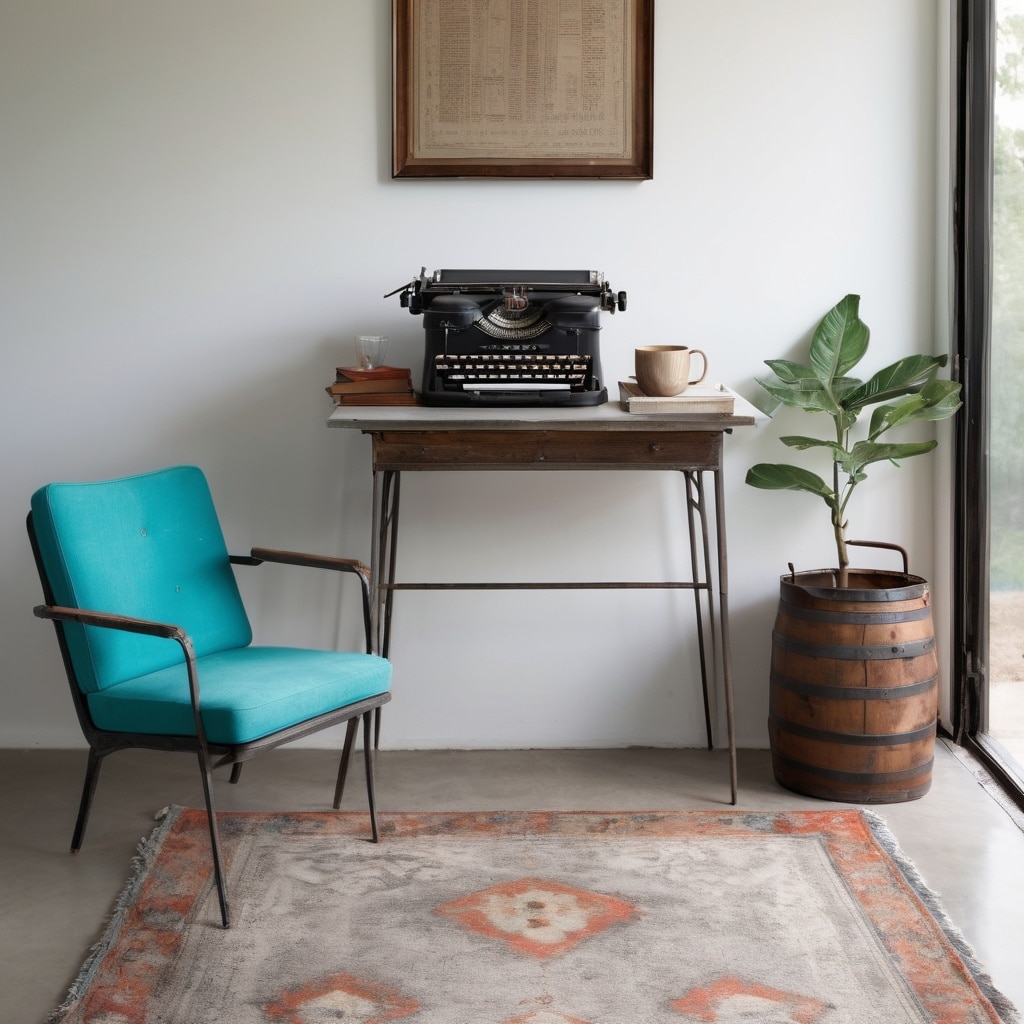
Vintage wall elements add character and history to hallways, creating rich visual interest even in contemporary homes.
“The tension between old and new creates design energy,” explains architectural salvage expert Thomas Klein. “Vintage elements with authentic patina bring soul to spaces that might otherwise feel too perfect or sterile.”
Consider these vintage approaches for hallway walls:
- Antique mirrors with characterful spotting and wear patterns
- Vintage wallpaper (original or reproduction) in limited applications
- Repurposed architectural elements like decorative moldings or medallions
- Collections of vintage frames housing contemporary images
Sourcing authentic vintage pieces has become more accessible through online marketplaces like Etsy, eBay, and Facebook Marketplace. For the best values, search for “vintage” rather than “antique,” as the latter command significantly higher prices for essentially similar aesthetic properties.
A 2023 survey by design platform Domino found that 78% of millennials and Gen Z homeowners incorporate at least one vintage element in their home decor, with hallways being the third most popular location after living rooms and bedrooms.
15. Maps and Travel-Themed Decor

Maps transform hallway walls into personalized journeys through places you’ve been or hope to visit—perfect for spaces we traverse daily.
“Map displays tap into our fundamental desire for both adventure and orientation,” explains cultural geographer Dr. Helen Martinez. “They simultaneously ground us and inspire wanderlust.”
Consider these map display approaches:
- Vintage map reproductions with sepia tones that add warmth and character
- Custom push-pin travel maps that track personal journeys
- Map wall decals that install without damage for temporary applications
- Framed collections of maps showing meaningful locations at various scales
Personalization elevates map displays from decorative to meaningful. Companies like Grafomap and Mapiful create custom map prints of specific locations that hold personal significance, while services like Stamen Design offer artistic interpretations of map data.
For interactive family projects, magnetic maps allow for moving markers that track future travel plans or family member locations, adding functional value to decorative wall elements.
16. Reclaimed Wood for Warmth and Texture

Reclaimed wood brings unmatched character and environmental benefits to hallway walls, adding warmth through authentic patina and texture.
“The striations, nail holes, and color variations in reclaimed wood tell stories that new materials simply can’t replicate,” notes sustainable designer Elena Rodriguez. “Each board bears witness to its previous life.”
Consider these reclaimed wood applications:
- Full wall installations that create dramatic textural impact
- Horizontal planking that visually expands narrow spaces
- Chair rail height applications that protect walls from traffic while adding character
- Floating shelves constructed from substantial reclaimed beams
Sourcing considerations affect both authenticity and safety. Reputable architectural salvage dealers like Olde Good Things and Elmwood Reclaimed Timber verify their wood’s origin and ensure it’s free from hazardous treatments, while providing information about the wood’s previous applications.
DIY installation has been simplified by companies like Stikwood and Timberchic, which offer peel-and-stick reclaimed wood products that install without specialized tools or permanent damage—ideal for renters wanting authentic wood character.
17. Functional Hook Systems
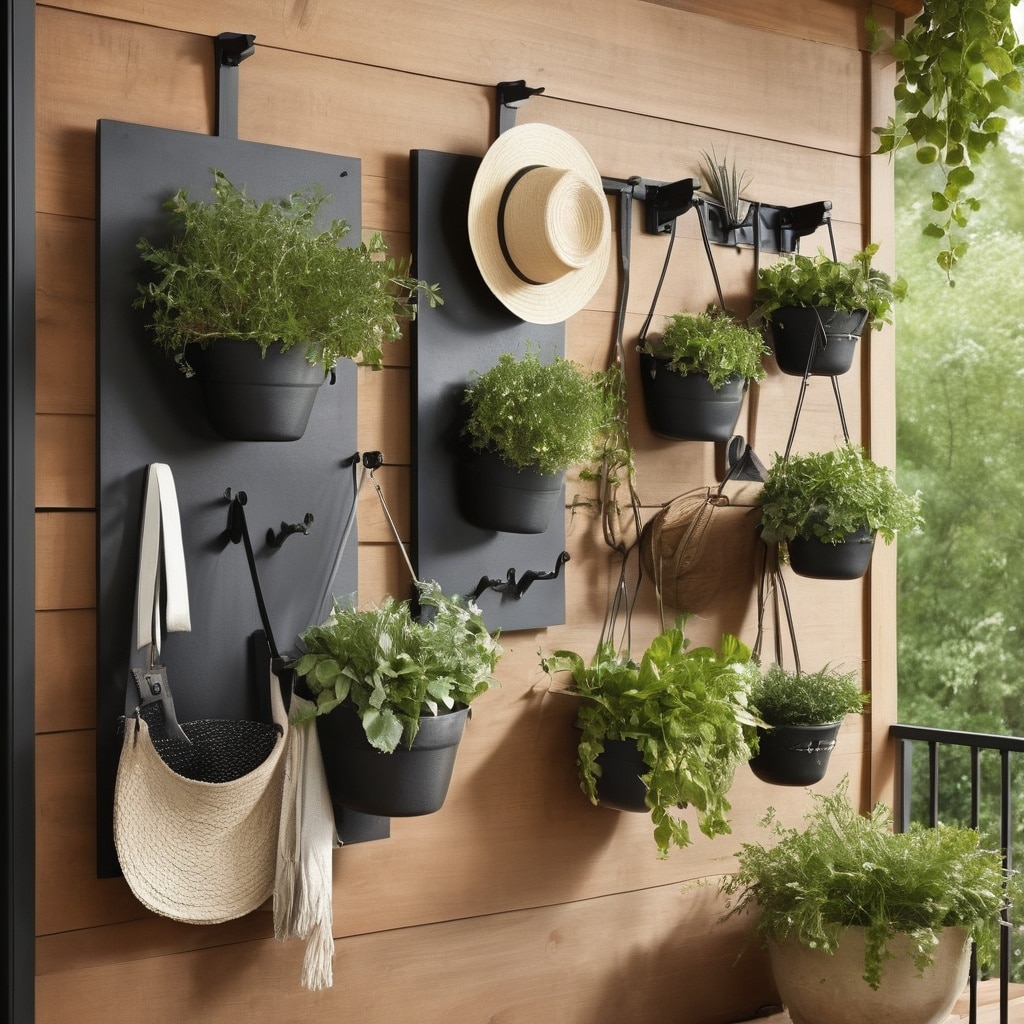
Strategic hook installations transform hallway walls into organized command centers that combine practical storage with decorative opportunity.
“Effective hook systems should be beautiful enough to enhance your space even when nothing’s hanging on them,” advises organization expert Jennifer Liu. “They’re permanently visible elements, not just storage solutions.”
Consider these hook system approaches:
- Vintage hook boards with character and patina
- Modern minimalist hook arrays in unexpected materials like concrete or brass
- Mixed function installations combining hooks with small shelves or mirrors
- Graduated height arrangements accommodating both adult and child access
Weight capacity and installation method determine longevity and function. Individual hooks mounted directly to studs provide maximum strength (typically supporting 25-50 pounds each), while decorative boards with multiple hooks distribute weight across several mounting points.
For rental-friendly solutions, companies like Command offer damage-free hooks with impressive weight capacities up to 7.5 pounds per hook—sufficient for light jackets and accessories without permanent installation.
18. Sculptural Art for Visual Depth
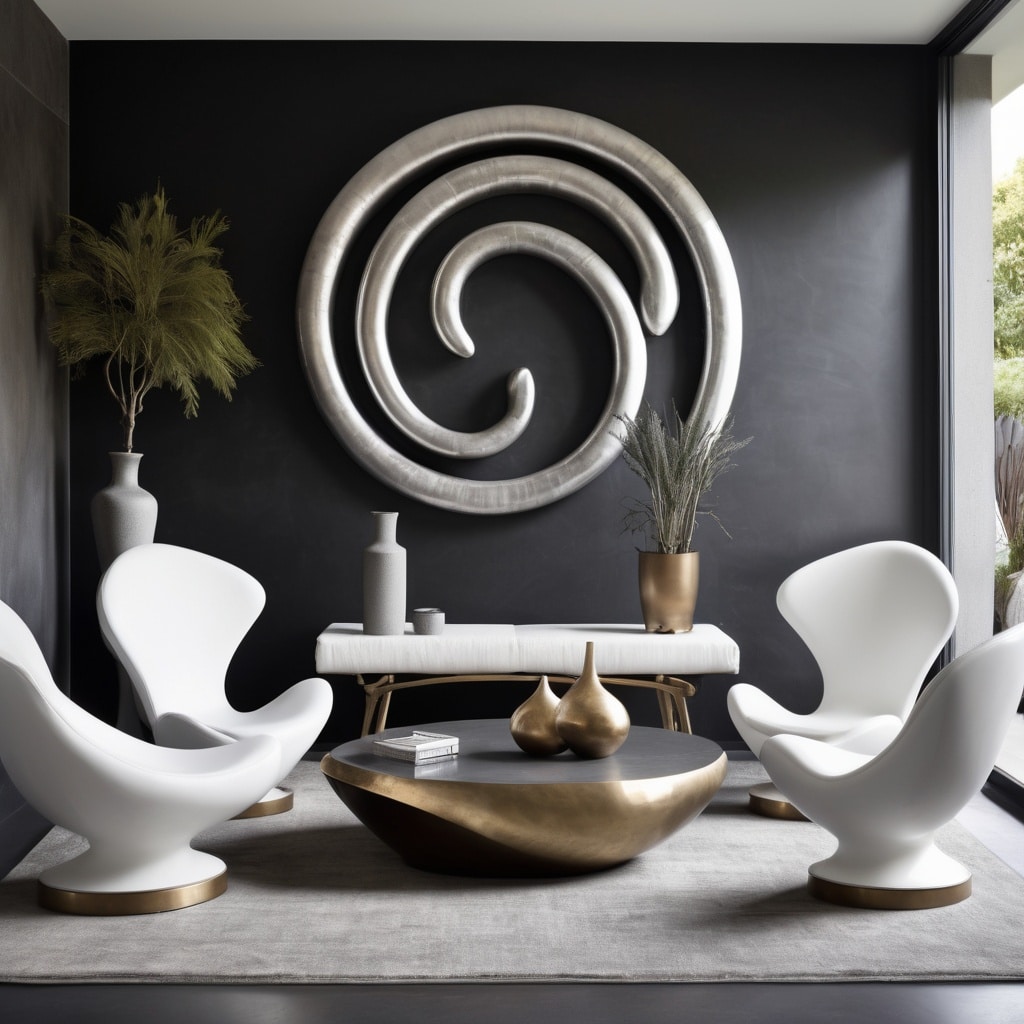
Three-dimensional wall art creates compelling visual and tactile interest in hallways, engaging viewers through form as well as color.
“Sculptural elements break the plane of the wall, creating shadow and dimension that 2D art simply cannot achieve,” explains gallery curator Mia Wong. “They transform flat surfaces into dynamic landscapes that change with lighting conditions.”
Consider these sculptural approaches:
- Wooden wall sculptures with natural grain and tactile appeal
- Metal wall installations that play with light and shadow
- Fiber art including weavings, macramé, and textile sculptures
- Dimensional ceramic pieces that bring organic forms to flat walls
Lighting dramatically impacts sculptural art. Directional lighting—either from ceiling-mounted spots or well-placed floor lamps—creates shadow play that enhances dimensional qualities. For maximum impact, adjust lighting angles seasonally as natural light patterns shift.
Weight considerations affect mounting methods. Lightweight sculptures can utilize standard picture hanging hardware, while substantial pieces may require specialized brackets, wall anchors, or direct stud mounting for secure installation.
19. Wall-Mounted Storage Beyond Shelves
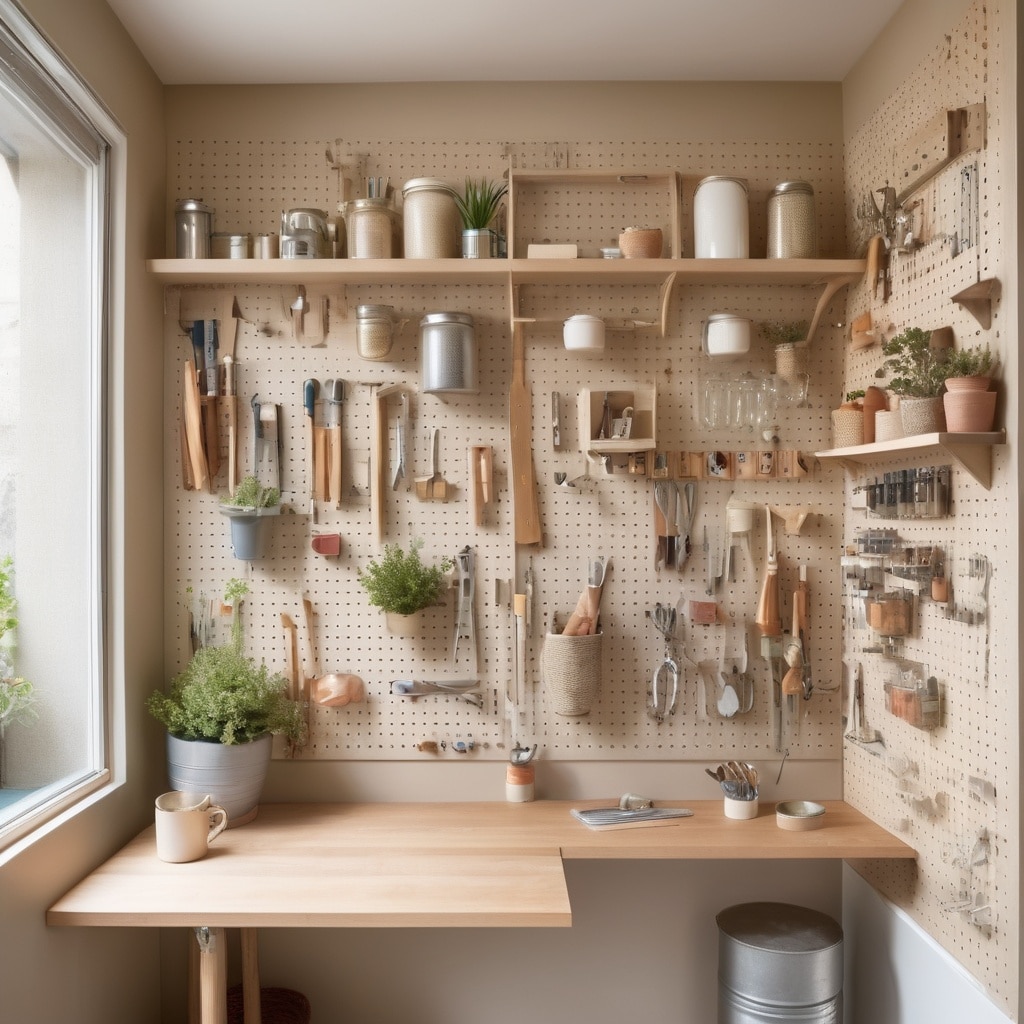
Innovative wall-mounted storage solutions transform hallway functionality while contributing to decorative schemes.
“The best storage solutions disappear visually when not in use,” notes small-space designer Alex Chen. “In hallways, where every inch counts, wall-mounted options free floor space while providing essential organization.”
Consider these mounted storage approaches:
- Floating cabinets that provide closed storage without floor footprint
- Wall-mounted drop zones with mail slots and key hooks
- Fold-down desks or tables that deploy only when needed
- Modular storage systems that can be reconfigured as needs change
Material selection impacts both aesthetics and function. Natural wood adds warmth but increases visual weight, while lacquered finishes in wall-matching colors create seamless integration for minimal visual impact.
Installation requirements vary with weight capacity. Storage intended for heavy items requires direct attachment to wall studs, while decorative storage can often utilize drywall anchors for more flexible placement.
20. Combining lements for Personal Style
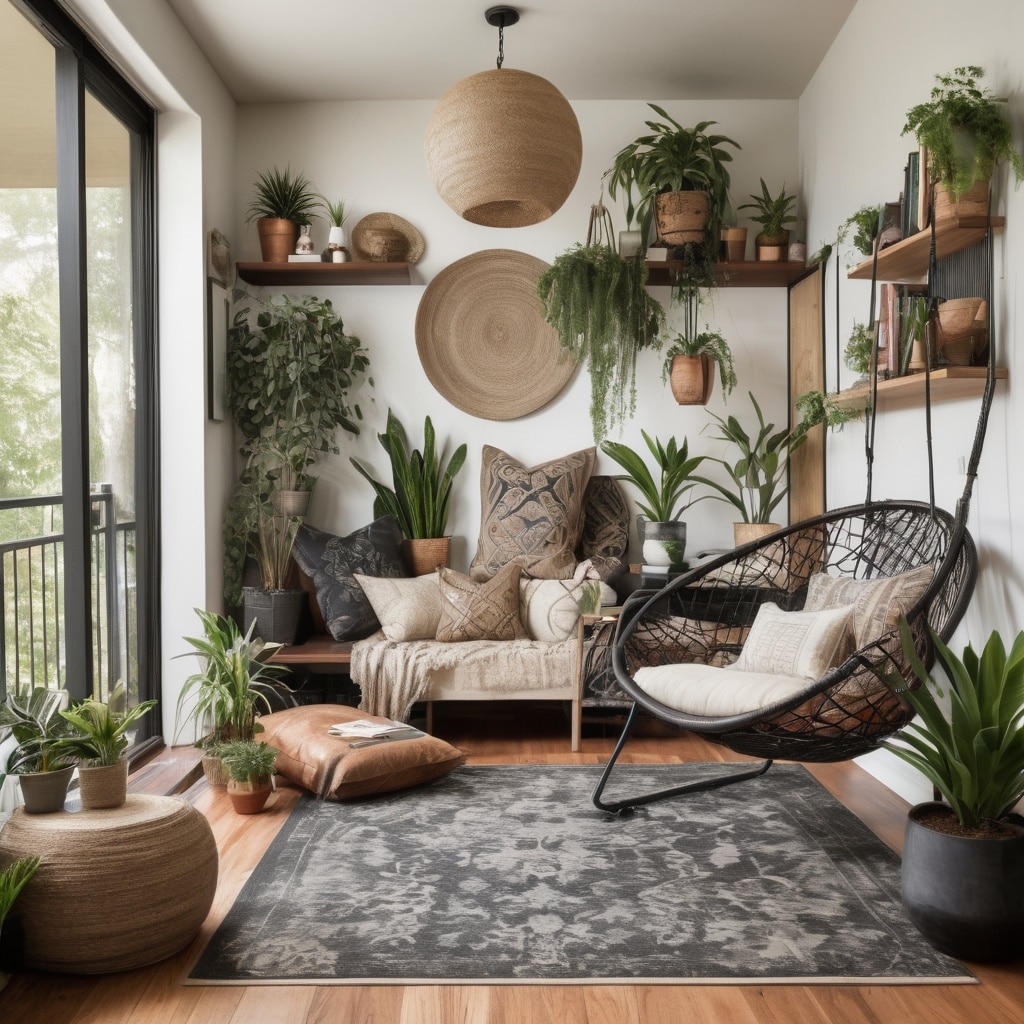
The most successful hallway transformations combine multiple approaches to create spaces that reflect personal style while meeting practical needs.
“Cookie-cutter design never creates spaces with soul,” says interior designer Marcus Johnson. “It’s the thoughtful combination of elements that speaks to your unique aesthetic and lifestyle.”
Consider these combination strategies:
- Texture + Color: Combining textured surfaces with bold color creates rich visual interest
- Function + Beauty: Integrating storage solutions with decorative elements serves dual purposes
- Old + New: Pairing vintage elements with contemporary pieces creates dynamic tension
- Natural + Manufactured: Combining organic materials with modern finishes balances warmth and crispness
The key to successful combinations lies in finding unifying elements—consistent color threads, complementary materials, or cohesive themes—that tie diverse approaches together.
A 2023 interior design survey by Houzz found that the most-loved home transformations combined an average of 4.7 distinct design elements, suggesting that thoughtful eclecticism creates more personally meaningful spaces than rigid adherence to single styles.
Conclusion
Your hallway represents both literal and figurative passage through your home—a space that deserves thoughtful design attention despite its utilitarian nature.
The 20 ideas we’ve explored demonstrate the extraordinary potential of these often-overlooked spaces. By combining aesthetic vision with practical function, your hallway walls can become showcases for personal style while enhancing daily life through improved organization and flow.
Remember that successful transformations typically evolve over time rather than materializing instantly. Start with foundational elements that address your primary functional needs, then layer in decorative touches that reflect your personal aesthetic.
Most importantly, view your hallway as an opportunity rather than an afterthought. With thoughtful attention to its unique characteristics and requirements, even the most challenging corridor can become one of your home’s most distinctive and delightful features.
